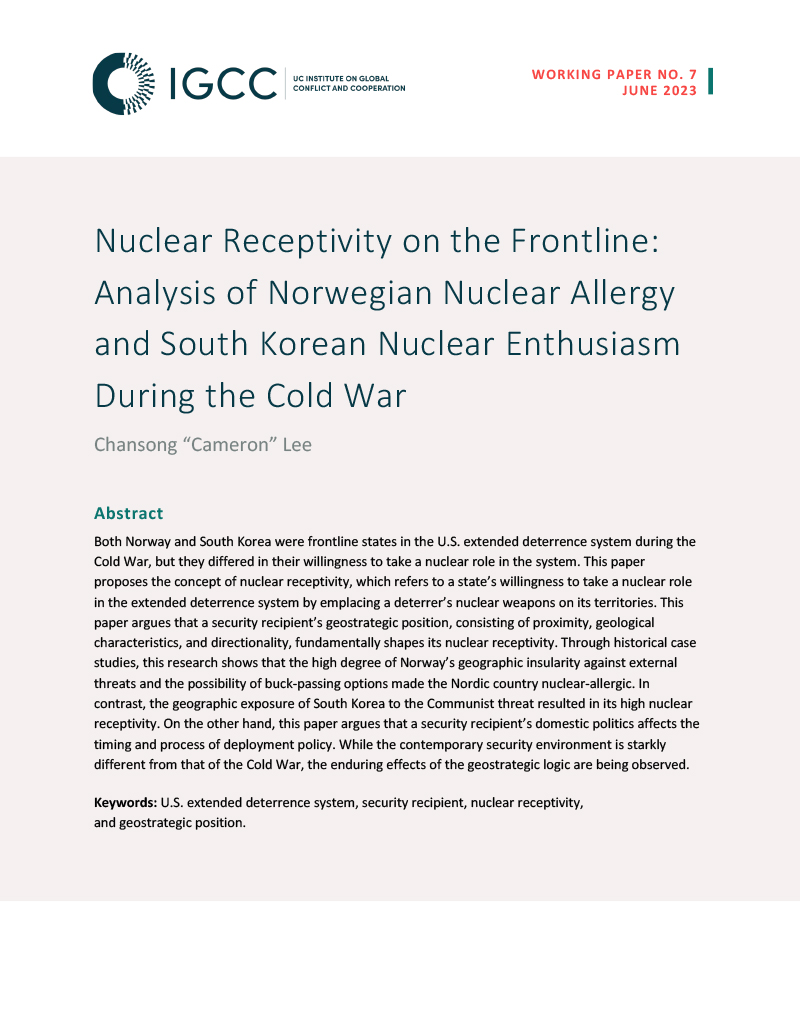Explaining Norwegian Nuclear Allergy and South Korean Enthusiasm

In this working paper, Chansong Cameron Lee argues that Norway’s geographic insularity and the presence regionally of allies with nuclear roles, decreased the country’s nuclear receptivity—or the willingness to participate in extended deterrence—while the geographic exposure of South Korea to the Communist threat resulted in its high nuclear receptivity.
DownloadBoth Norway and South Korea were frontline states in the U.S. extended deterrence system during the Cold War, but they differed in their willingness to take a nuclear role in the system. This paper proposes the concept of nuclear receptivity, which refers to a state’s willingness to take a nuclear role in the extended deterrence system by emplacing a deterrer’s nuclear weapons on its territories. This paper argues that a security recipient’s geostrategic position, consisting of proximity, geological characteristics, and directionality, fundamentally shapes its nuclear receptivity. Through historical case studies, this research shows that the high degree of Norway’s geographic insularity against external threats and the possibility of buck-passing options made the Nordic country nuclear-allergic. In contrast, the geographic exposure of South Korea to the Communist threat resulted in its high nuclear receptivity. On the other hand, this paper argues that a security recipient’s domestic politics affects the timing and process of deployment policy. While the contemporary security environment is starkly different from that of the Cold War, the enduring effects of the geostrategic logic are being observed.
Thumbnail credit: Kelly Michals